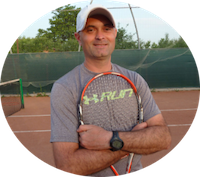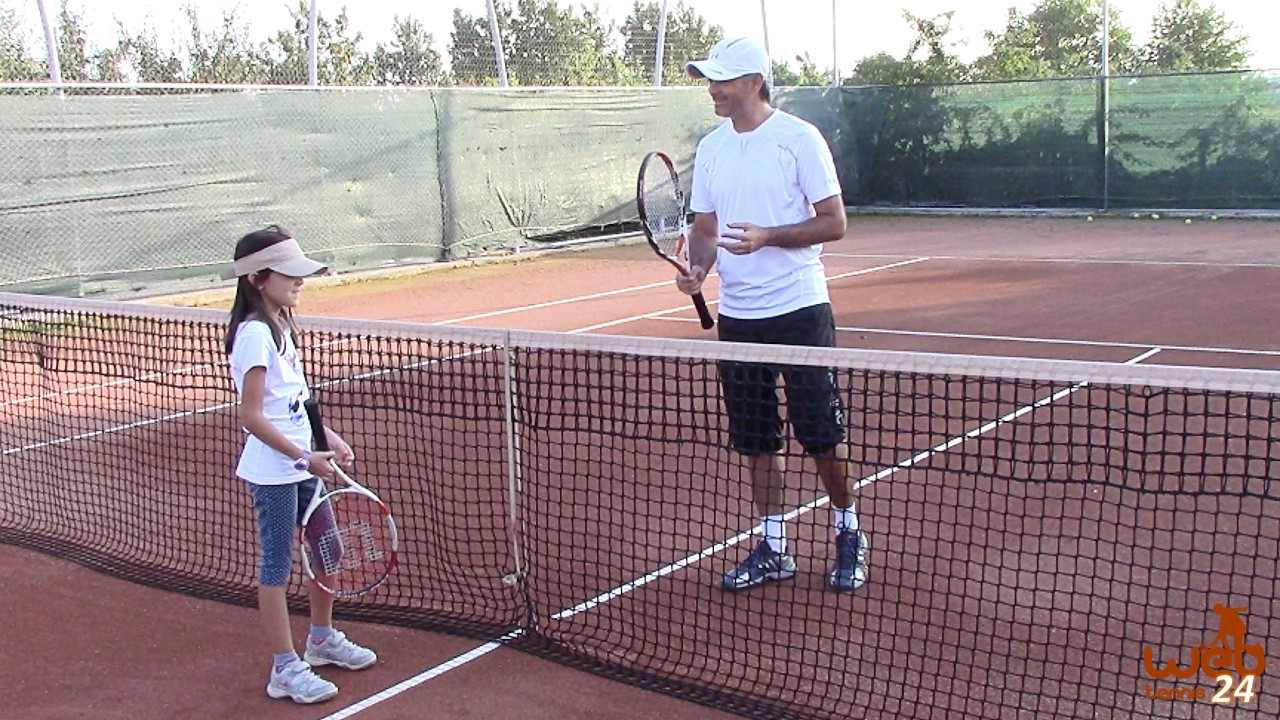“Whatever you do, don’t say anything to me about my serve. If I think about it, I’m in trouble.” Andy Roddick said this when he first met Patrick McEnroe, his Davis Cup coach.
In a tennis world where the emphasis is on the technical aspect, there is one area that very few tennis players dare to adopt – and it pays off big time for their game. That is… letting things happen naturally.
What I’m about to tell you is directed to your tennis improvement by getting you out of the normal and popular tennis culture.
As a tennis player and coach, I have been experiencing many frustrations and successes in my own lessons with all kinds of players.
One thing that’s certain is that all players are different and you cannot teach the same technical aspect to everyone. I have to pay very much attention to what works for each of my students individually.
For example, in teaching my two daughters, Cezara (8 years old) and Bianca (6 years old)…
Cezara, on the serve, prefers the pinpoint stance (when during the toss the back foot joins up with the front foot) whereas Bianca likes the more traditional platform stance (when both feet are not moving during the toss and stand fairly close to each other).
Cezara’s dominant elbow must elevate during the forehand ground-stroke preparation to avoid opening her racquet too much during contact; Bianca has a natural way of controlling the racquet face at contact without having to focus on the set-up. And so forth…
But my ultimate point for this letter is that players should be allowed to forget about all the technical overload and focus on the outcome.
When serving, the outcome could be just getting the ball in (for beginning players), sending the ball with lots of slice or topspin, or placing it powerfully in the corner of the service box.
As Andy Roddick did when he was a junior – he got fed up with all the technique that was imposed on him when serving and then one day he just threw the ball up and hit it as hard as he naturally felt. And it worked great.
Just imagine if someone would have tried to change his serve technique!
Or if some coach would have told Nadal to not hit his forehands with that looping finish! (he was so fortunate to have such an open-minded coach like his uncle Toni)
You can only imagine what damage you can do when you want to impose one kind of technique on every single player that you coach.
We should always be paying attention to what works for each player.
As a tennis player, you should listen to your body and how it reacts to every stroke you execute…
In my teachings, I get the best results when I give my kids tasks that are goal-oriented. Examples:
– hit 40 serves in
– send 25 forehands cross-court
– rally 50 balls over the net with your partner
– etc.
When goal-oriented tasks are given, the mind and body work together to accomplish them successfully.
Next time you go to practice, forget about the technique. Instead, focus on what you want to accomplish: is it more slice on your serve? is it more power on your backhand? more penetrating volleys?
Then here’s what you need to do:
– before you start hitting the balls visualize (or tell yourself) what you want: more power, more spin or to get it in
– let your body loose and the racquet do its work
– clear your mind of any technical thoughts and keep in there only the outcome you aim for (more power, spin, placement, etc.)
When you practice without the technical details cluttering your mind you will see better things happening.

Cosmin Miholca
Certified Tennis Coach
Check out my work at WebTennis24 where I share with you my best video tennis lessons, drills and tips for players, coaches and tennis parents.


0 Comments